Russian State v Religion
The first of a 4 part story of the Russian regime’s state capture of religion in Russia
Part One:
The first in a series of threads on religion and Russia - understanding the targeting of religious organisations by the russian State. The first thread looks internally at the #history and evolving role of the #Russian #Orthodox #Church, which has become an arm of Putin’s state control, and its influence on society. This will be a multi thread report covering;
👉 The history of the Russian Orthodox Church, the relationship between religion and the Russian state and the asymmetric #symphonia between the Russian Orthodox Church and the Russian regime
👉 Religion as an arm of State interference - The Montenegro Affair
👉 Religious persecution by the Russian Regime since the invasion of Ukraine
👉 The malign influence Russia exerts on western religions
This is a story about the history of the Russian Orthodox Church, the relationship between religion and the Russian state and the asymmetric symphonia between the Russian Orthodox Church and the Russian regime
A brief history of the relationship between the Russian Orthodox Church and the Russian Regime, from persecution to the championing of Soviet styled ideologies through to the current day.
After the fall of the Byzantine Empire in 1453, the Russian Orthodox Church evolved into a semi-independent (autocephalous) branch of Eastern Christianity. In 1589 the metropolitan of Moscow received the title of patriarch. Nevertheless, the Russian church retained the Byzantine tradition of authorizing the head of state and the government bureaucracy to participate actively in the church's administrative affairs. Separation of church and state thus would be almost unknown in Russia.
As Western Europe was emerging from the Middle Ages into the Renaissance and the Reformation, Russia remained isolated from the West, and Russian Orthodoxy was virtually untouched by the changes in intellectual and spiritual life being felt elsewhere. In the seventeenth century, the introduction by Ukrainian clergy of Western doctrinal and liturgical reforms prompted a strong reaction among traditionalist Orthodox believers, resulting in a schism in the church.
In the early eighteenth century, Peter the Great modernized, expanded, and consolidated Muscovy into what then became known as the Russian Empire. In the process of redefining his power as tsar, Peter curtailed the minimal secular influence of the Russian Orthodox Church, which was functioning principally as a pillar of the tsarist regime.
In 1721 Peter the Great went so far as to abolish the patriarchate and establish a governmental organ called the Holy Synod, staffed by secular officials, to administer and control the church. As a result, the church's moral authority declined in the eighteenth and nineteenth centuries.
In the second half of the nineteenth century, the monastic tradition produced a number of church elders who gained the respect of all classes in Russia as wise counselors on both secular and spiritual matters. Similarly, by 1900 a strong revival movement was calling for the restoration of church autonomy and organizational reform. However, few practical reforms had been implemented when the October Revolution of 1917 brought to power the Bolsheviks (see Glossary), who set about eliminating the worldly and spiritual powers of the church.
Next 👉 Karl Marx and Lenin’s views on the Church
Karl Marx, the political philosopher whose ideas were nominally followed by the Bolsheviks, called religion "the opiate of the people." Although many of Russia's revolutionary factions did not take Marx literally, the Bolshevik faction, led by Vladimir I. Lenin, was deeply suspicious of the church as an institution and as a purveyor of spiritual values. Therefore, atheism became mandatory for members of the ruling Russian Communist Party (Bolshevik). To eliminate as soon as possible what was deemed the perverse influence of religion in society, the communists launched a propaganda campaign against all forms of religion.
By 1918 the government had nationalized all church property, including buildings. In the first five years of the Soviet Union (1922-26), twenty-eight Russian Orthodox bishops and more than 1,200 priests were executed, and many others were persecuted. Most seminaries were closed, and publication of most religious material was prohibited.
The next quarter-century saw surges and declines in arrests, enforcement of laws against religious assembly and activities, and harassment of clergy. Antireligious campaigns were directed at all faiths; beginning in the 1920s, Buddhist and Shamanist places of worship in Buryatia, in the Baikal region, were destroyed, and their lamas and priests were arrested (a practice that continued until the 1970s).
The League of the Militant Godless, established in 1925, directed a nationwide campaign against the Orthodox Church and all other organized religions. The extreme position of that organization eventually led even the Soviet government to disavow direct connection with its practices. In 1940 an estimated 30,000 religious communities of all denominations survived in all the Soviet Union, but only about 500 Russian Orthodox parishes were open at that time, compared with the estimated 54,000 that had existed before World War I.
In 1939 the government significantly relaxed some restrictions on religious practice, a change that the Orthodox Church met with an attitude of cooperation. When Germany invaded the Soviet Union in 1941, the government reluctantly solicited church support as it called upon every traditional patriotic value that might resonate with the Soviet people. According to witnesses, active church support of the national war effort drew many otherwise alienated individuals to the Soviet cause.
The birth of The Church as the 5th Army of the State:
Some times associated with the Byzantine era, it was Peter the Great who effectively turned the Orthodox Church into a department of state, abolishing the Patriarchate and placing a state appointed bureaucrat at the head of the church.
In consequence the Orthodox Church came to be seen as a pillar of the state and, though it enjoyed a very limited political role, its bishops were important dignitaries who could use their position to pursue church ends, such as supporting tight restrictions on religious minorities until 1905.
Yet this close association with the state, which included the obligation to report on any political matters heard in the confessional, along with the scandals associated with Rasputin, was to have bitter consequences for the Orthodox after 1917 despite the emergence of a significant reform movement within the church at the turn of the century.
Next 👉 Khrushchev and Brezhnev
The government concessions for the sake of national defense reinvigorated the Russian Orthodox Church. Thousands of churches reopened during the war. But the Khrushchev regime (1953-64) reversed the policy that had made such a revival possible, pursuing a violent six-year campaign against all forms of religious practice. Although the church retained its official sanction throughout that period, Khrushchev's campaign was continued less stringently by his successor, Leonid I. Brezhnev (in office 1964-82). By 1975 the number of operating Russian Orthodox churches had been reduced to about 7,000. Some of the most prominent members of the Russian Orthodox hierarchy and religious activists were jailed or forced to leave the church. Their place was taken by a docile clergy whose ranks were sometimes infiltrated by agents of the Committee for State Security (Komitet gosudarstvennoy bezopasnosti--KGB). Under these circumstances, the church espoused and propagated Soviet foreign policy and furthered the Russification of non-Russian believers, such as Orthodox Ukrainians and Belorussians.
Despite official repression in the Khrushchev and Brezhnev years, religious activity persisted. Although regular church attendance was common mainly among women and the elderly, special occasions such as baptisms and Easter brought many more Russians into the churches. An increase in church weddings in the 1950s and 1960s stimulated the establishment of secular "marriage palaces" offering the ceremonial trappings of marriage devoid of religious rites. When applications for seminary study increased significantly in the 1950s, the Communist Youth League (Komsomol) forced aspiring seminarians to endure interrogations that discouraged many and that succeeded, by 1960, in sharply reducing the number of candidates.
The general cultural liberalization that followed Stalin's death in 1953 brought a natural curiosity about the Russian past that especially caught the interest of younger generations; the ceremonies and art forms of the Russian Orthodox Church, an inseparable part of that past, attracted particular attention, to the dismay of the Khrushchev and Brezhnev regimes. Historian James Billington has pointed out that in that period religious belief was a form of generational rebellion by children against doctrinaire communist parents.
Although the Russian Orthodox Church did not play the activist role in undermining communism that the Roman Catholic Church played in Poland and elsewhere in Eastern Europe, it gained appreciably from the gradual discrediting of Marxist-Leninist ideology in the late Soviet period. In the mid-1980s, only about 3,000 Orthodox churches and two monasteries were active. As the grip of communism weakened in that decade, however, a religious awakening occurred throughout the Soviet Union. Symbolic gestures by President Gorbachev and his government, under the rubric of glasnost indicated unmistakably that Soviet policy was changing.
Next 👉 Gorbachev and the Church
In 1988 Gorbachev met with Orthodox leaders and explicitly discussed the role of religion in the lives of their followers. Shortly thereafter, official commemoration of the millennium of Russian Orthodoxy sent a signal throughout Russia that religious expression again was accepted. Beginning in 1989, new laws specified the church's right to hold private property and to distribute publications. In 1990 the Soviet legislature passed a new law on religious freedom, proposed by Gorbachev; at the same time, some of the constituent republics began enacting their own laws on the same subject. In the fall of 1990, a new deputy to the parliament of the Russian Republic, the Orthodox priest Gleb Yakunin, guided the passage of an extraordinarily liberal law on religious freedom. That law remained in force when Russia became a separate nation the following year. (Yakunin was defrocked in 1994, however, for criticizing the church hierarchy.)
According to the head of the Russian Orthodox Church, Patriarch Aleksiy II, between 1990 and 1995 more than 8,000 Russian Orthodox churches were opened, doubling the number of active parishes and adding thirty-two eparchies (dioceses). In the first half of the 1990s, the Russian government returned numerous religious facilities that had been confiscated by its communist predecessors, providing some assistance in the repair and reconstruction of damaged structures. The most visible such project was the building of the completely new Christ the Savior Cathedral, erected in Moscow at an expense of about US$300 million to replace the showplace cathedral demolished in 1931 as part of the Stalinist campaign against religion. Financed mainly by private donations, the new church is considered a visible acknowledgment of the mistakes of the Soviet past.
In the first half of the 1990s, the church's social services also expanded considerably with the creation of departments of charity and social services and of catechism and religious education within the patriarchy. Because there is a shortage of priests, Sunday schools have been introduced in thousands of parishes. An agreement between the patriarchy and the national ministries of defense and internal affairs provides for pastoral care of military service personnel of the Orthodox faith. The patriarch also has stressed that personnel of other faiths must have access to appropriate spiritual guidance. In November 1995, Minister of Defense Grachev announced the creation of a post in the armed forces for cooperation with religious institutions.
Among the religious organizations that have appeared in the 1990s are more than 100 Russian Orthodox brotherhoods. Reviving a tradition dating back to the Middle Ages, these priest-led lay organizations do social and philanthropic work. In 1990 they formed the Alliance of Orthodox Brotherhoods, which organizes educational, social, and cultural programs and institutions such as child care facilities, hostels, hospitals, and agricultural communities. Although its nominal task is to foster religious and moral education, the alliance has taken actively nationalist positions on religious tolerance and political issues.
Next 👉 Yeltsin and Putin’s start with the Church
Public opinion surveys have revealed that the church emerged relatively unscathed from its association with the communist regime--although dissidents such as Yakunin accused Aleksiy II of having been a KGB operative. According to polls, in the first half of the 1990s the church inspired greater trust among the Russian population than most other social and political institutions. Similarly, Aleksiy II, elected to head the church upon the death of Patriarch Pimen in 1990, was found to elicit greater grassroots confidence than most other public figures in Russia. The political leadership regularly seeks the approval of the church as moral authority for virtually all types of government policy. Boris Yeltsin's appearance at a Moscow Easter service in 1991 was considered a major factor in his success in the presidential election held two months later. Patriarch Aleksiy officiated at Yeltsin's inauguration that year.
Throughout the history of the Soviet Union (1917–1991), there were periods when Soviet authorities suppressed and persecuted various forms of Christianity to different extents depending on state interests. Soviet Marxist-Leninist policy consistently advocated the control, suppression, and ultimately, the elimination of religious beliefs, and it actively encouraged the propagation of Marxist-Leninist atheism in the Soviet Union. However, most religions were never officially outlawed.
Demolition of the Cathedral of Christ the Saviour in Moscow on the orders of Joseph Stalin, 5 December 1931: The state advocated the destruction of religion, and to achieve this goal, it officially denounced religious beliefs as superstitious and backward.The Communist Party destroyed churches, synagogues, and mosques, ridiculed, harassed, incarcerated and executed religious leaders, as part of the promotion of scientific atheism. Religious beliefs and practices persisted among some of the population. Russian malign influence seeks to exploit every weakness and societal division within in a respective country. An adviser to Russian president Vladimir Putin, Vladislav Surkov, recently stated that “Foreign politicians talk about Russia’s interference in elections and referendums around the world. In fact, the matter is even more serious: Russia interferes in your brains, we change your conscience, and there is nothing you can do about it.” It must be understood that everything from religion, history, facts, information, racial and ethnic tensions, illicit financing, and institutional and economic weakness, can be weaponized.
If liberals were perhaps pessimistic about a revival of a state church, conservatives had more reasons to be optimistic that Putin's stated commitment to order and patriotism might lead to a renewed focus on Orthodox values in public life. Yet, Putin's period in office has not been characterized by a serious state-led attempt to restore the political authority of the Russian Orthodox Church and religious matters are clearly very much secondary affairs for the Kremlin, except where they impinge on security or social harmony.
Very much a child of the Soviet Union, Putin inherited a religion-politics tionship that had undergone significant changes during his lifetime. When the president was a boy, Khrushchev waged a militant campaign against religion came to maturity, Brezhnev further developed a policy of low-level harassment, combined with close state control of the few religious institutions permitted to exist.
Next 👉 Summary of recent years
Towards the end of the Gorbachev years, the state effectively dropped its anti-religious commitment; in October 1990, the Russian Federation adopted a new law on the freedom of conscience, removing the administrative and repressive restrictions of the past. This inaugurated the first phase of post-communist policy, which can be characterized as one of free-market romanticism, when existing religious communities enjoyed a certain institutional revitalization and newer domestic and foreign based groups were able to operate freely.
Inevitably, this provoked a reaction as nationalist politicians and leaders of the dominant Orthodox Church expressed concerns about about the "invasion of the sects" and claims were made that Russia was not readyfor an unregulated religious market where the ideologically disorientated population might fall prey to dubious religious groups. In consequence the Orthodox Church started to campaign for a more restrictive law that would privilege traditional religious communities and make it harder for others to function in a new Russia.
in 1997, a new law on religion put in place some of the restrictions promoted by the Orthodox leadership and various political groups. The 1997 law ushered in the second phase of post-communist religious policy, characterized by some as "managed pluralism." Under the new legal regime, "tradi
tional" religious communities (Orthodox, Muslim, Buddhist and Jewish) enjoyed arange of rights that were not available to minority "groups, which remained free to worship but lacked some of the legal privileges offered to the former groups. Whilst the fears that this might usher in a new the leadership era of Soviet-style repression of religious communities have not materialized, it has enabled local authorities hostile to particular communities to use the law to impose restrictions on religious activity. Particularly affected have ben groups such as Roman Catholics, Pentecostals, independent evangelicals, Jehovah’s Witnesses and some Adventists, members of various "new religious movements”. Most notoriously, the Moscow branch of the Salvation Army which faced the surreal charge of being a paramilitary organization.
During the Yeltsin era, religion was not a major concern of the administration, though this did not stop the church seeking to influence the President, as in the passage of the 1997 law, or prevent critics from charging that religion enjoyed undue influence in a country whose constitution mandated separation of Church from State.
The basic argument that Russians problems with the West are rooted in the liberal idea of unlimited freedom and individual autonomy, without any reference to the good of the community or moral restraint, continues to be repeated in numerous speeches and interviews by church leaders throughout the period since Putin’s Presidency. This misconception, often rooted in a very limited understanding of the realities of Western society underlay the much stronger anti-Westernism promoted by many within the church leadership and provided the foundations for their skepticism about closer ties with the West and their wariness of democratic politics.
This could be seen in Metropolitan Kirill's concern that if millions of Orthodox were to join the European Union they could not simply be expected to accept the prevailing liberal consensus with its alien values, a consensus they had played no role in creating. It could also be seen in the more extreme conspiracy theories floating around in parts of the church, which saw Orthodoxy as the last obstacle to the creation of a new liberal world order. Above all, it was evident in the skepticism about democracy, which church leaders in today’s Russian Orthodox share with the president.
This publication is thread one of four, see the next thread to continue reading!
References and sources:
https://countrystudies.us/russia/38.htm
https://www.jstor.org/stable/pdf/24358086.pdf?refreqid=fastly-default%3Afb74000006ba53ba8711ea3c099502e8&ab_segments=&origin=&initiator=&acceptTC=


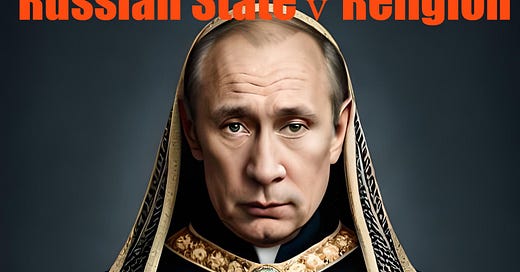



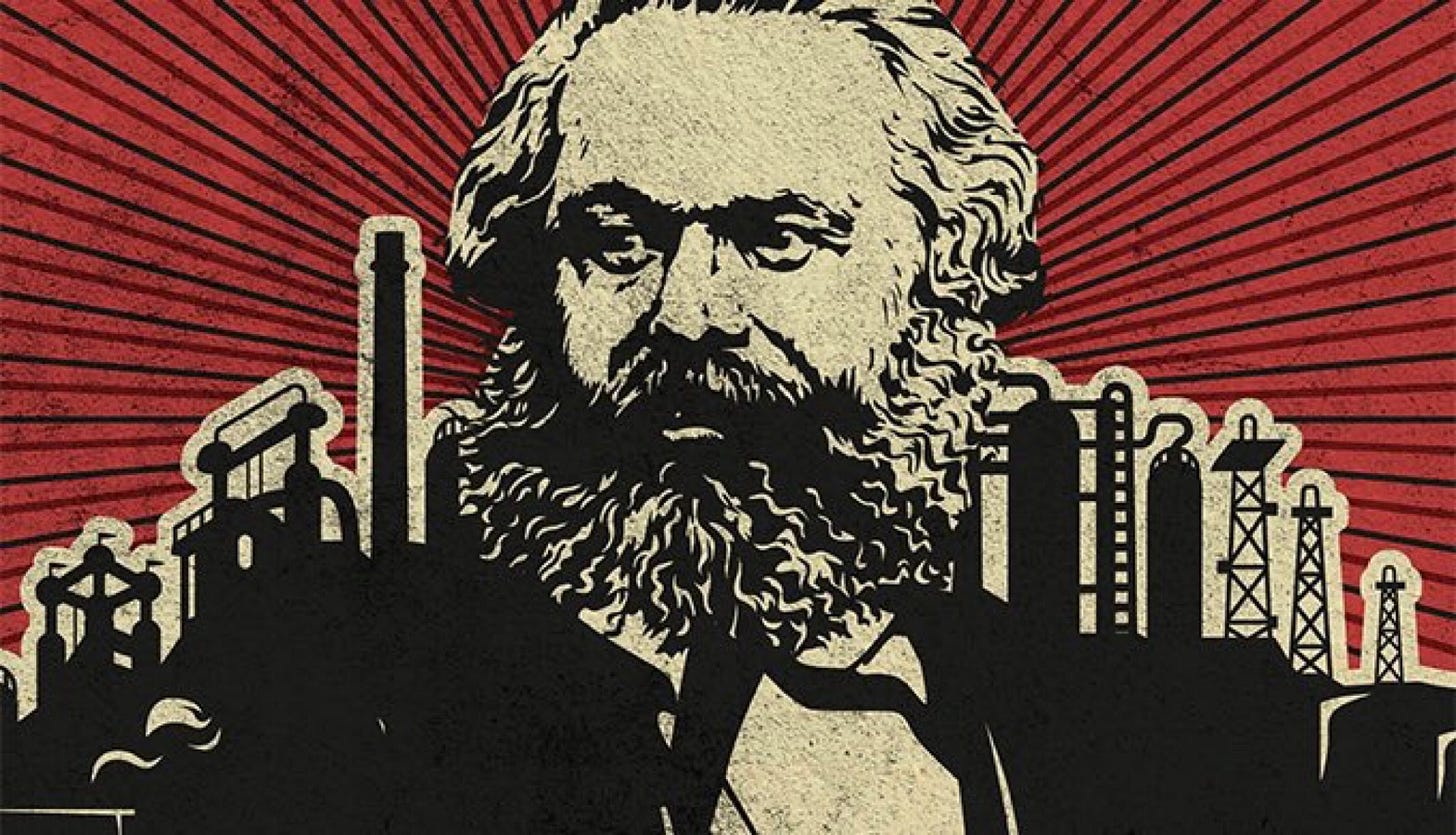

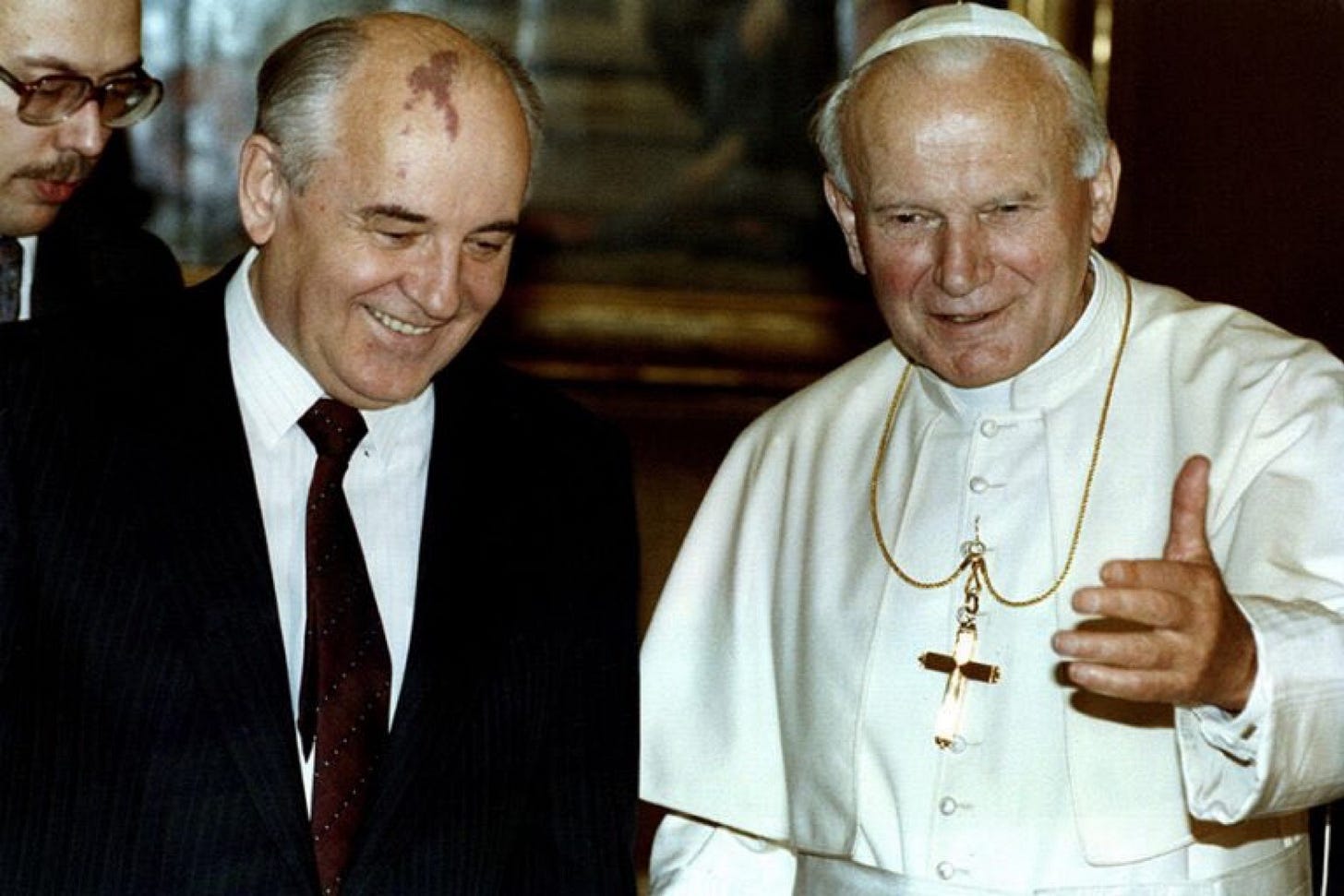
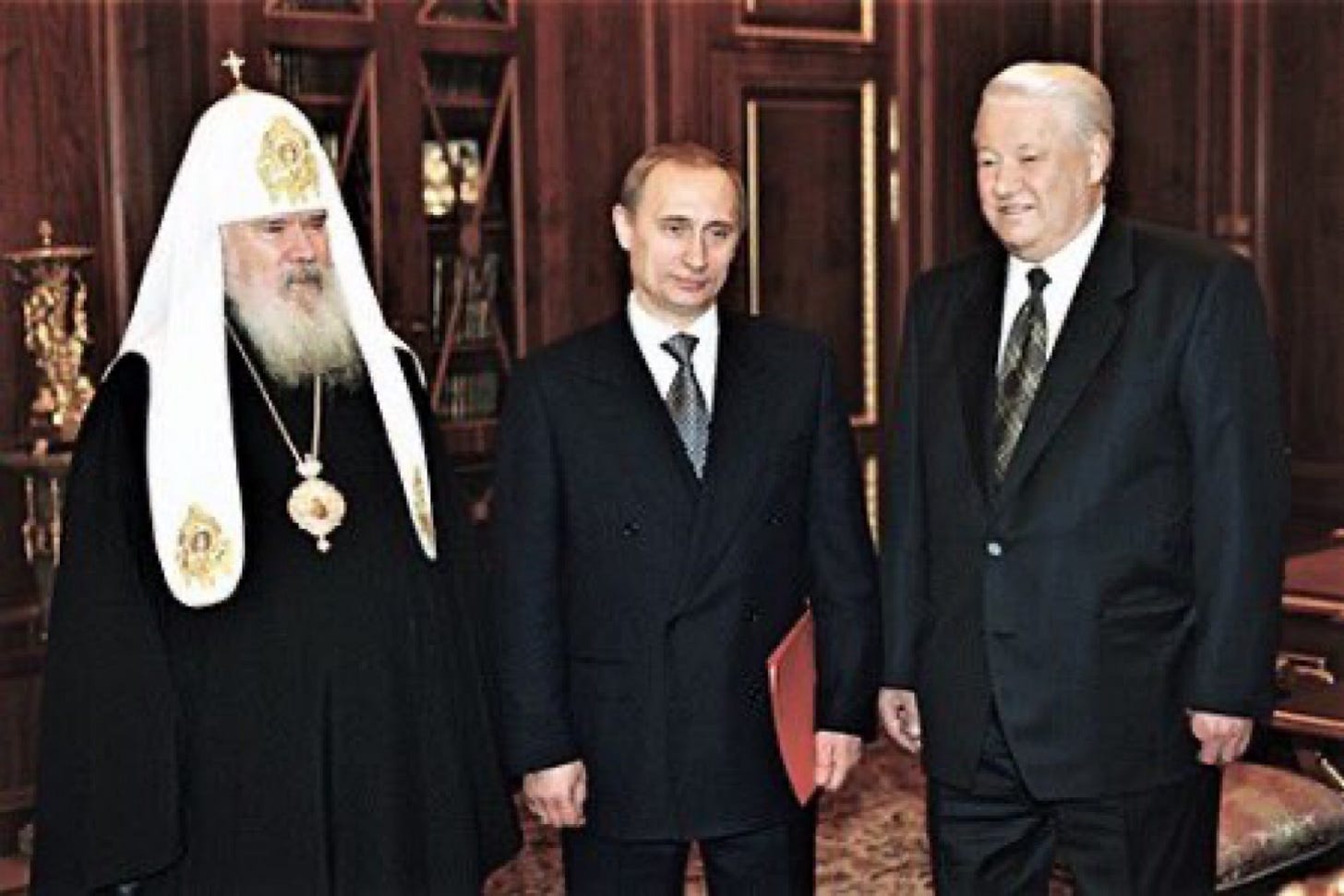

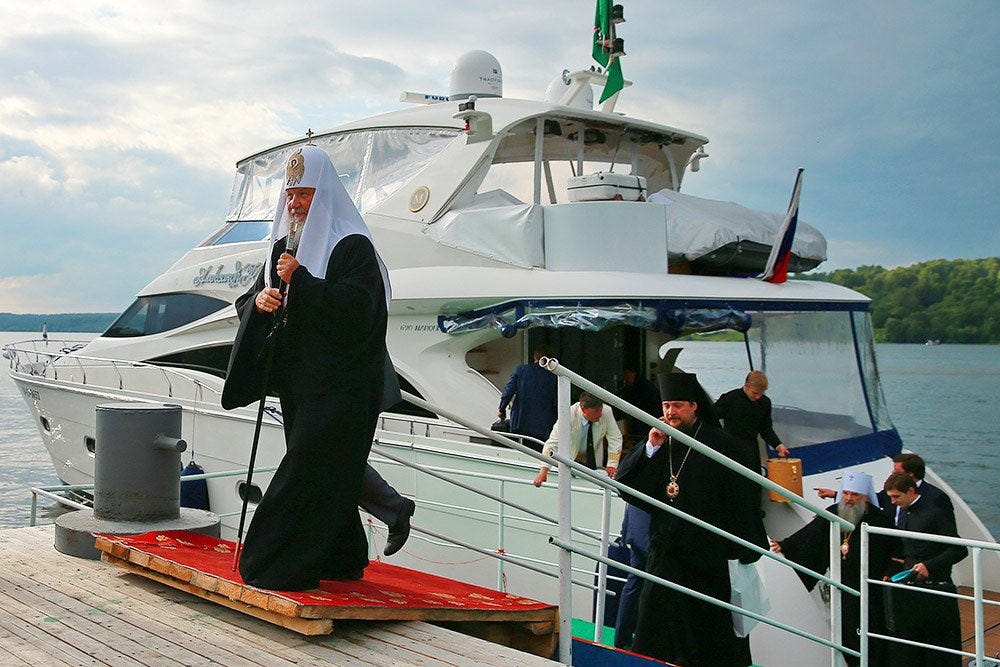
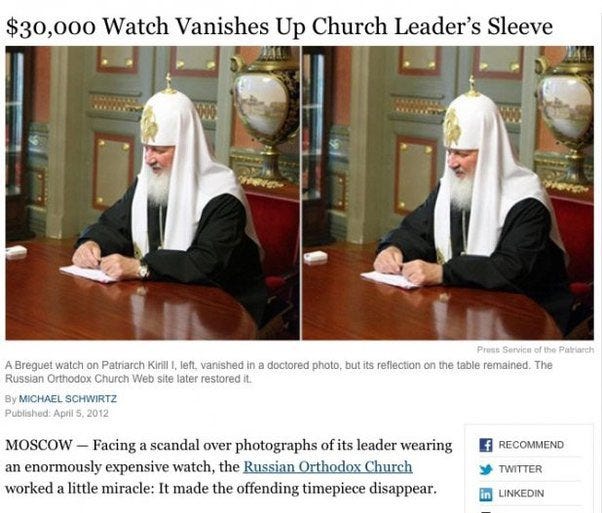
A fascinating and enthralling read Beefy. Your attention to detail is nonpareil! Thanks